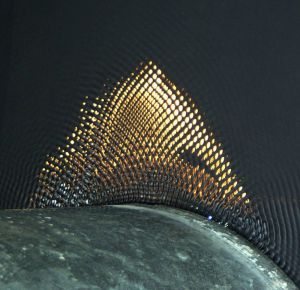
Waving II
Krzysztof Mazur
MULTIMEDIALNE INTERACTIONS Bunker Art 9-19.10.1997 Cracov
Programme 1996/97
The operating principle of this installation is based on closed cycle of effects, where people through their activity modulate the course of the effects. The first link is a sound generator, producing a ware in the form of electrical signal with the same frequencies. Then the waves are amplified and prompt vibrations in a speaker located in a steel cylinder, creating an audible sound. The cylinder is partially immersed in water; after receiving the vibrations from the speaker, it transmits them to the molecules of water; after receiving the vibrations from the speaker, it transmits them to the molecules of water. On the surface of the water a standing wave is formed, creating a three-dimensional relief a beam of light is directed, which, after it bounces off the water, causes a lacy picture of the wave to from on the wall, only when the room is darkened.
The waves formed on the water are received by wave sensors, and in this way they modulate the frequency of the waves formed in the generator, which closes the entire cycle and begins the next loop. The person taking part in the whole process, dabbing in the water, creates water waves, which are superimposed on those which already exist. This, in a fundamentally dynamic way, influences the whole course of the cycle, which, without the active participation of this person, would undergo self-stabilization. The sound, the picture on the wall, and the relief created on the water undergo change simultaneously. In this way a dialogue arises, the installation behaves actively in a particular manner, provided that someone displays his own activity in a specified manner. Generally speaking, the installation consists of the four cycles described above, which act independently of each other. My intention through this installation is to evoke in the persons participating a reflective feeling associated of form of the wave phenomenon, through active auditory, visual, and tactile impressions.
The work consists of elements which have been torn out of the reality that surrounds us. Their reception in ordinary life is associated with their functional purpose. That is why it is hard for us to isolate the individual character of these elements from the surrounding hum of phenomena, in which we most often understand only the functional, utilitarian applications. In exceptional circumstances, however, these common and useful fragments of our reality begin to speak to us in a beautiful language.
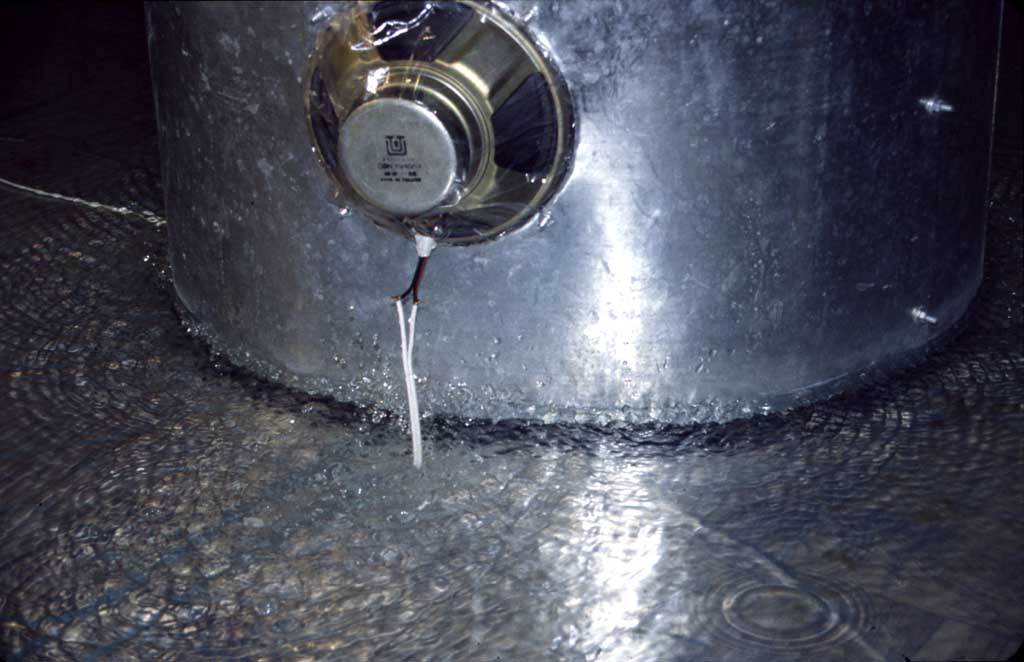
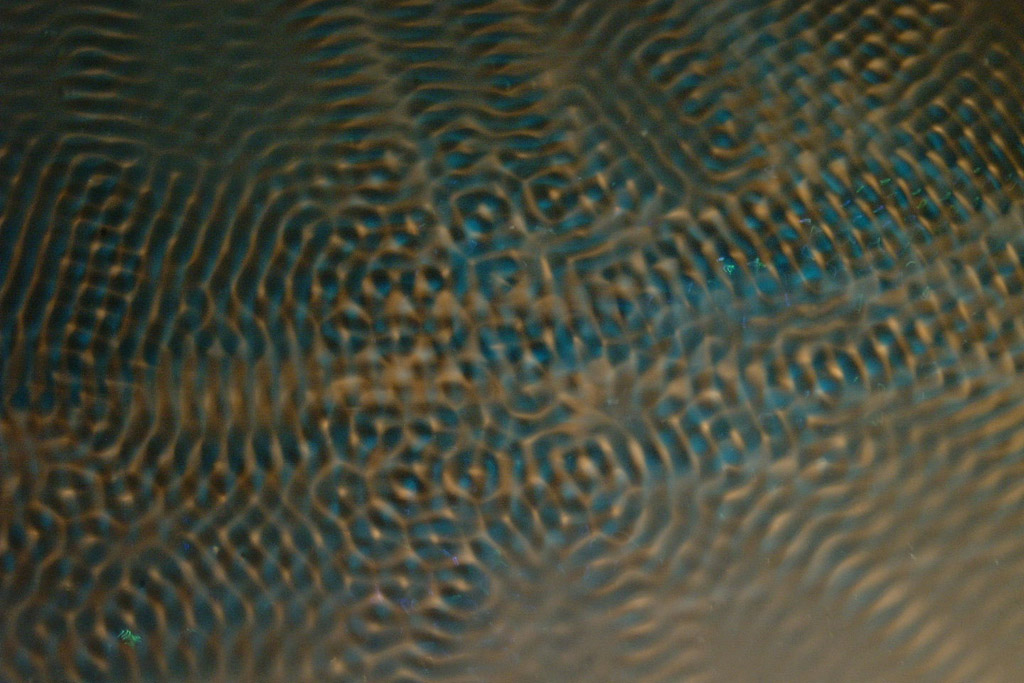
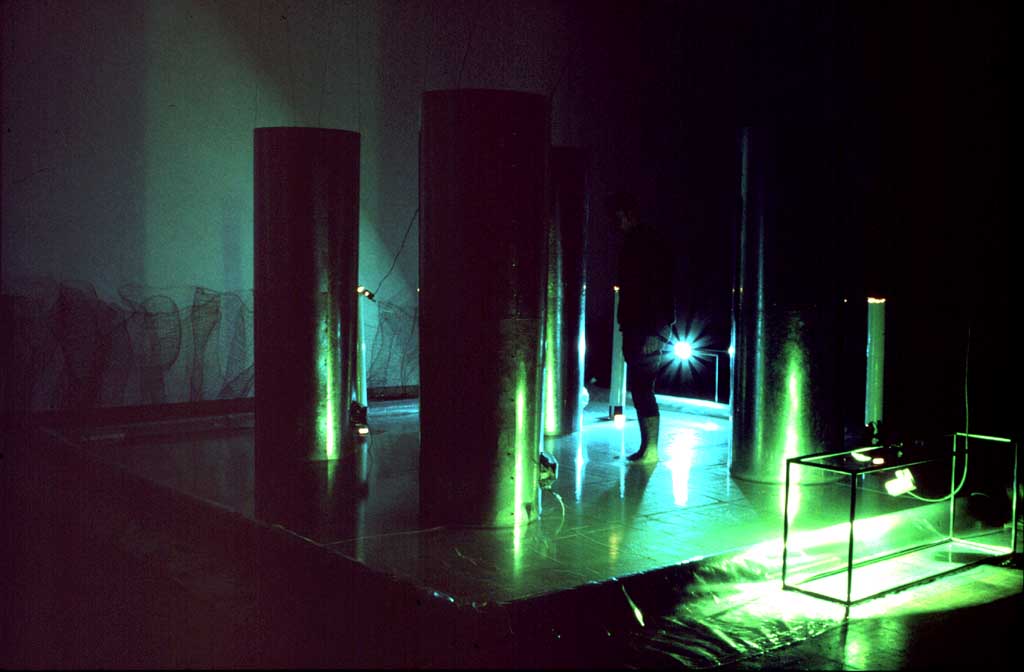
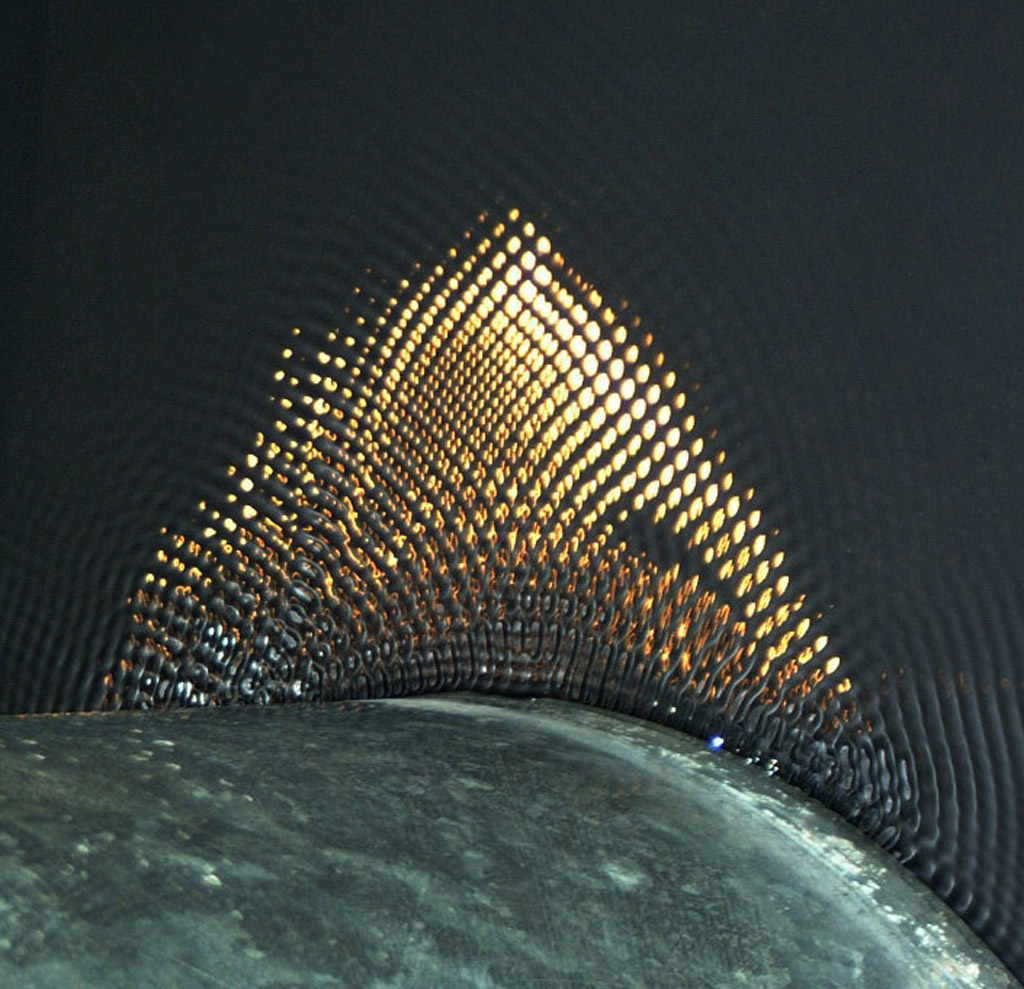
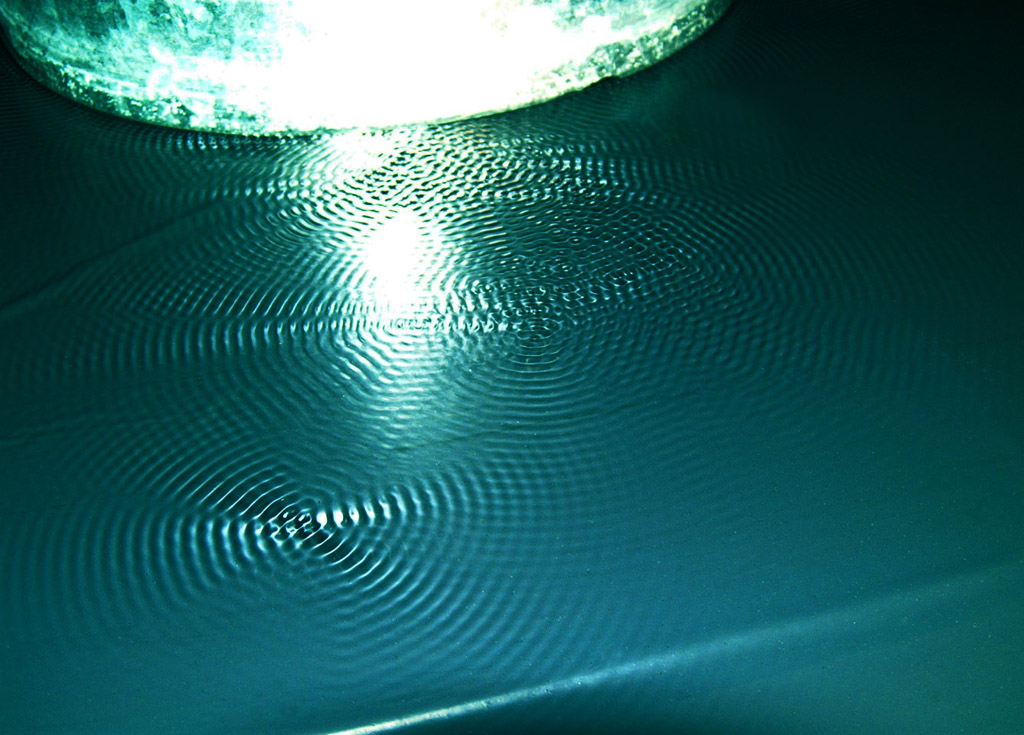
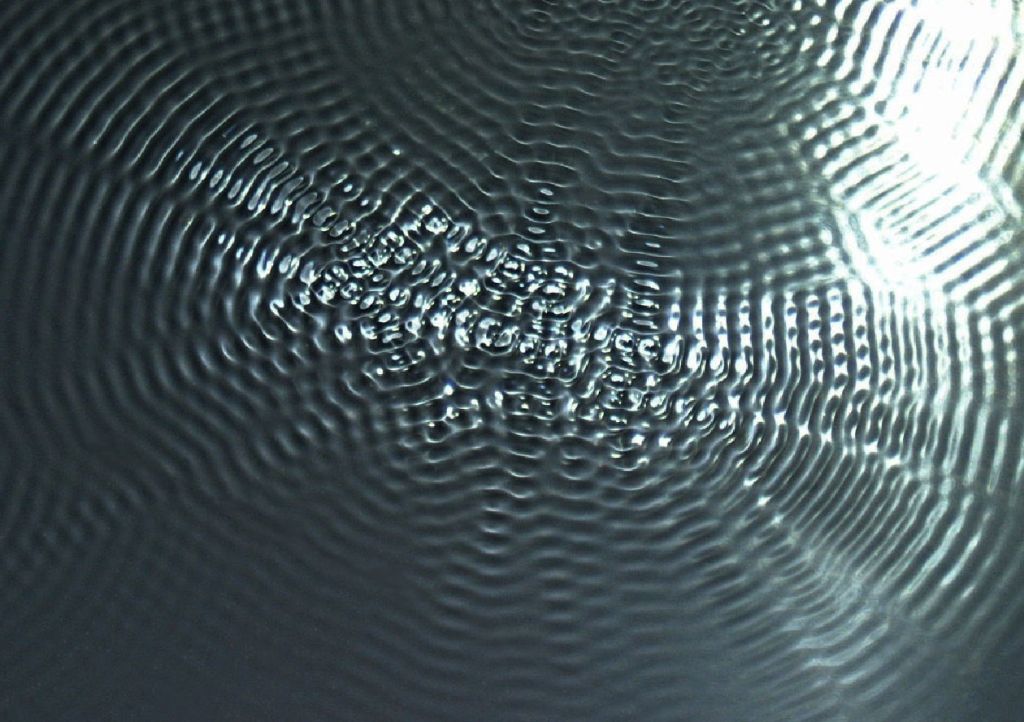
Programme 1996/97
The operating principle of this installation is based on closed cycle of effects, where people through their activity modulate the course of the effects. The first link is a sound generator, producing a ware in the form of electrical signal with the same frequencies. Then the waves are amplified and prompt vibrations in a speaker located in a steel cylinder, creating an audible sound. The cylinder is partially immersed in water; after receiving the vibrations from the speaker, it transmits them to the molecules of water; after receiving the vibrations from the speaker, it transmits them to the molecules of water. On the surface of the water a standing wave is formed, creating a three-dimensional relief a beam of light is directed, which, after it bounces off the water, causes a lacy picture of the wave to from on the wall, only when the room is darkened.
The waves formed on the water are received by wave sensors, and in this way they modulate the frequency of the waves formed in the generator, which closes the entire cycle and begins the next loop. The person taking part in the whole process, dabbing in the water, creates water waves, which are superimposed on those which already exist. This, in a fundamentally dynamic way, influences the whole course of the cycle, which, without the active participation of this person, would undergo self-stabilization. The sound, the picture on the wall, and the relief created on the water undergo change simultaneously. In this way a dialogue arises, the installation behaves actively in a particular manner, provided that someone displays his own activity in a specified manner. Generally speaking, the installation consists of the four cycles described above, which act independently of each other. My intention through this installation is to evoke in the persons participating a reflective feeling associated of form of the wave phenomenon, through active auditory, visual, and tactile impressions.
The work consists of elements which have been torn out of the reality that surrounds us. Their reception in ordinary life is associated with their functional purpose. That is why it is hard for us to isolate the individual character of these elements from the surrounding hum of phenomena, in which we most often understand only the functional, utilitarian applications. In exceptional circumstances, however, these common and useful fragments of our reality begin to speak to us in a beautiful language.












